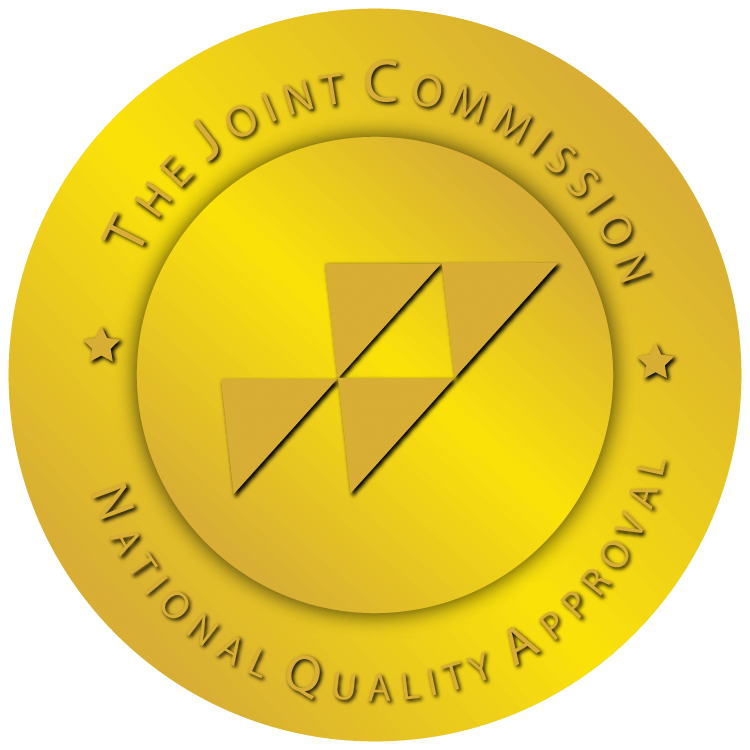
Unfortunately, keeping healthy remains a difficult task, but everyone could use a helping hand. Many personal health issues are initially the result of a lack of proper information and education. Particularly for those who are in recovery, understanding how important nutritional guidance is, how substance abuse affects nutrition, and what the most important factors in drug-related recovery are will provide the necessary information for beginning a journey toward a healthier future.
How Important Is Nutrition in Recovery?
Nutrition is important for everyone, not just those in recovery. Maintaining a healthy diet provides any individual with the proper nutrients their body needs to live a long, rich, and satisfying life. The prevalence of drive-through convenience and processed foods challenge many people’s efforts at sticking to a diet. Keeping a consistent diet provides the essential nutrients needed to supply both energy and strength and is profoundly important for anyone striving to live a long and healthy life.
Thankfully, after the difficult initial steps are taken, better habits begin to form. After a few weeks, when the new eating habits have set in, nutrition-based diets become much easier to maintain. In contrast to fleeting diet fads, which have initial success but rarely demonstrate long-term change, making fundamental changes to routines and regiments has proven more effective at sticking with a goal. As those in recovery know well, lasting change requires fundamental changes to patterns of thinking, beliefs, and behavior, not just a short-term program.
Why Nutrition Is Neglected
Addiction and substance abuse develop as a result of underlying factors that leave a person vulnerable both to substances and poor nutrition. Recent studies have found that the link between metabolic syndrome, nutritional deficiency, and substance abuse all correlate. [1]Virmani, A., Binienda, Z., Ali, S., & Gaetani, F. (2006). Links between nutrition, drug abuse, and the metabolic syndrome. Annals of the New York Academy of Sciences, 1074 (1), 303–314. … Continue reading Metabolic syndrome is an umbrella term that encapsulates a clustered set of conditions relating to greater issues. Typically, the affected individual begins to display both physical and cellular changes as well as changes in behavior.
Metabolic syndrome has also been found to correspond to socioeconomic status in addition to substance abuse. [2]Abraham, N. G., Brunner, E. J., Eriksson, J. W., & Robertson, R. P. (2007). Metabolic syndrome: Psychosocial, neuroendocrine, and classical risk factors in type 2 diabetes. Annals of the New York … Continue reading Socioeconomic factors are difficult to overcome. Healthy fruit and vegetables tend to be more expensive than lesser quality varieties and unhealthy junk food. When saving money is a huge concern for the household, going the affordable route often means skimping out on nutrition.
Substance abuse is also recognized as a catalyst for this syndrome. [3]Virmani, A., Binienda, Z., Ali, S., & Gaetani, F.. (2007). Metabolic syndrome in drug abuse. Annals of the New York Academy of Sciences, 1122(1), 50–68. https://doi.org/10.1196/annals.1403.004 If untreated, metabolic syndrome may lead to hypertension, heart disease, and diabetes down the line. By eating healthy and avoiding abusing substances, any individual at risk immediately begins to reduce their chances for these conditions. Getting in touch with a health professional to begin speaking about your nutritional needs is imperative to getting on the right track. Taking the correct next steps now will benefit you the best in the long run.
How Does Drug Abuse Affect Nutrition?
Everyone understands that substance abuse often changes the individual’s mental processing order and shifts their priorities for a short duration of time. Drugs may increase or decrease the individual’s appetite as well as their metabolism. For example, a side effect of cocaine is a lack of appetite. This immediately suggests that a chronic user of crack cocaine may not be receiving enough nutritional value in their daily life. On the other hand, some strains of cannabis have been known to give users the “munchies,” increasing their appetite and creating the stereotype that all marijuana users are well fed due to this side effect of the substance.
Some lesser-known information regarding the relationship between diet and drugs relates to how food is received by the body. [4]Mahboub, N., Rizk, R., Karavetian, M., & de Vries, N. (2021). Nutritional status and eating habits of people who use drugs and/or are undergoing treatment for recovery: a narrative review. … Continue reading Drugs have a direct effect on metabolism, changing how the body reacts to food and absorbs it to create energy. The body normally undergoes a process that extracts all nutrients from the food eaten efficiently and discards any waste. This process undergoes extreme changes when chronic substance abuse is present. Research shows that drug abuse changes hormones within the individual’s body, even changing their internal chemistry. Because an individual does not extract all the nutrients in food when chronically using drugs, that individual may need to eat more than what is necessary.
What Does a Healthy Metabolism Look Like?

It’s important to recognize the different ways that substances alter your body. When a drug is used with the express purpose of altering a state of mind, deeper, more important aspects of their physical being are affected that may not be considered. A person’s metabolism is pliable and can easily change. Only through proper exercise and diet can a person’s metabolism be sure to reach a point where it can healthily create energy for the individual.
Your metabolism is a system in your body which converts food eaten into energy. This chemical process is undergone by almost all living organisms. Proteins and amino acids break down food and convert the nutrition into energy which a person uses to move, think, and stay alive. A healthy metabolism is essential for anyone to keep on track.
The average American is recommended to intake approximately 2,000 calories a day to maintain a healthy weight. However, every person is different, and every metabolism is different and must be examined by a professional doctor or nutritionist. Unfortunately, there are no universal steps for everyone to follow to achieve a healthy metabolism. Each person’s metabolism has undergone a multitude of shifts and changes which may be hard to track by non-professionals. Utilizing a nutritional instructor to guide you in discovering the right steps to take is a fantastic resource. If you have any questions regarding your particular health needs, seek assistance to see what is right for you and your metabolism.
What Are the Most Important Factors in Recovery From a Drug Addiction?
Keeping a healthy lifestyle is difficult for anyone to jump into. The truth is that staying healthy requires a keen eye on multiple facets of one’s life to stay on track. Exercise, healthy eating, and keeping off drugs are the most important steps to take while in recovery. [5]Garland, E. L. (2016). Restructuring reward processing with mindfulness-oriented recovery enhancement: Novel therapeutic mechanisms to remediate hedonic dysregulation in addiction, stress, and pain. … Continue reading Overcoming a drug or alcohol addiction is one of the most difficult things anyone could endure. Making the life choice to keep healthy is also incredibly strenuous for most people. However, pursuing both goals will make achieving each one more attainable.
What many people don’t understand is how briefly exercise is unpleasant before the habit becomes physically enjoyable. Most people new to exercise find themselves surprised to be exhilarated by a session at the gym or a run around the block. After a couple of weeks of serious exercise, dopamine and serotonin flow into the brain, creating a feeling of euphoria within the individual while experiencing what was a previously unpleasant activity.

Making the Connection Between Nutrition and Rehab
The work you put in now will be rewarding later, and your future self will thank you. If you haven’t yet started your path to recovery, lack direction, or are finding it difficult to stay motivated, reach out to a member of our team today. Not only do we help our clients with establishing better nutrition and healthy activities, but we offer addiction treatment programs that offer a holistic and personalized approach to helping you recover from substance abuse. By finding sobriety, improving your diet, and engaging in healthy physical exercise and activity, you will be sure to find success on your path to sobriety.
Giving oneself permission to have a treat like the below Peanut Butter Banana Quesadillas certainly can’t hurt. They are easy to prepare and delicious, with a good daily dose of protein and potassium, among other nutrients that your recovering body needs.
Peanut Butter Banana Quesadillas
Makes one serving:
1-8 inch whole wheat tortilla
1 Tbsp. natural peanut butter
1/2 medium banana
1 Tbsp. semi-sweet chocolate chips
- Spread the peanut butter over the surface of the tortilla.
- Slice the banana very thinly. Arrange the slices over half the tortilla. Sprinkle the chocolate chips over the banana slices and fold the tortilla in half.
- Cook the quesadilla in a skillet over medium-low heat until it is golden brown and crispy on both sides. Serve immediately.

This type of treat goes well with coffee for a light snack or can be served as a dessert. It tastes so yummy you won’t even realize that it’s nutritious too.
*Editor’s Note: This article was originally published Oct 13, 2014 and has been updated September 21, 2022.
Reviewed by Christopher Schwartfigure MS, LGPC, CAC-AD
References
| ↑1 | Virmani, A., Binienda, Z., Ali, S., & Gaetani, F. (2006). Links between nutrition, drug abuse, and the metabolic syndrome. Annals of the New York Academy of Sciences, 1074 (1), 303–314. https://doi.org/10.1196/annals.1369.027 |
|---|---|
| ↑2 | Abraham, N. G., Brunner, E. J., Eriksson, J. W., & Robertson, R. P. (2007). Metabolic syndrome: Psychosocial, neuroendocrine, and classical risk factors in type 2 diabetes. Annals of the New York Academy of Sciences, 1113(1), 256–275. https://doi.org/10.1196/annals.1391.015 |
| ↑3 | Virmani, A., Binienda, Z., Ali, S., & Gaetani, F.. (2007). Metabolic syndrome in drug abuse. Annals of the New York Academy of Sciences, 1122(1), 50–68. https://doi.org/10.1196/annals.1403.004 |
| ↑4 | Mahboub, N., Rizk, R., Karavetian, M., & de Vries, N. (2021). Nutritional status and eating habits of people who use drugs and/or are undergoing treatment for recovery: a narrative review. Nutrition reviews, 79 (6), 627–635. https://doi.org/10.1093/nutrit/nuaa095 |
| ↑5 | Garland, E. L. (2016). Restructuring reward processing with mindfulness-oriented recovery enhancement: Novel therapeutic mechanisms to remediate hedonic dysregulation in addiction, stress, and pain. Annals of the New York Academy of Sciences, 1373 (1), 25–37. https://doi.org/10.1111/nyas.13034 |








